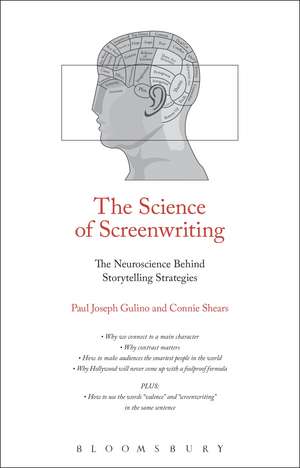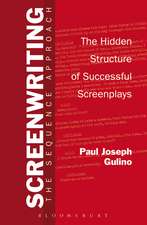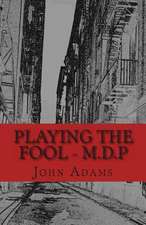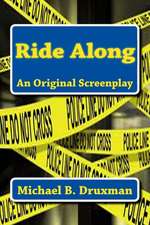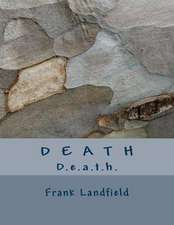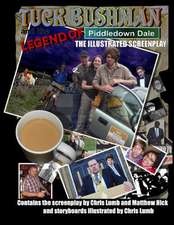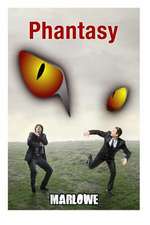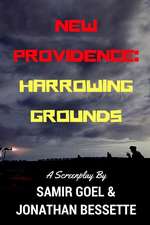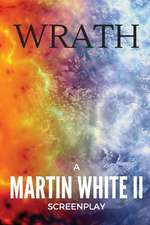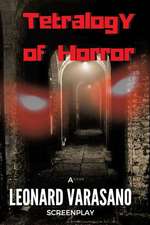The Science of Screenwriting: The Neuroscience Behind Storytelling Strategies
Autor Professor Paul Joseph Gulino, Connie Shearsen Limba Engleză Paperback – 7 feb 2018
| Toate formatele și edițiile | Preț | Express |
|---|---|---|
| Paperback (1) | 158.73 lei 3-5 săpt. | |
| Bloomsbury Publishing – 7 feb 2018 | 158.73 lei 3-5 săpt. | |
| Hardback (1) | 495.37 lei 6-8 săpt. | |
| Bloomsbury Publishing – 7 feb 2018 | 495.37 lei 6-8 săpt. |
Preț: 158.73 lei
Preț vechi: 183.97 lei
-14% Nou
Puncte Express: 238
Preț estimativ în valută:
30.38€ • 31.52$ • 25.39£
30.38€ • 31.52$ • 25.39£
Carte disponibilă
Livrare economică 25 februarie-11 martie
Preluare comenzi: 021 569.72.76
Specificații
ISBN-13: 9781501327254
ISBN-10: 1501327259
Pagini: 184
Ilustrații: 61 bw illus
Dimensiuni: 138 x 216 x 16 mm
Greutate: 0.3 kg
Editura: Bloomsbury Publishing
Colecția Bloomsbury Academic
Locul publicării:New York, United States
ISBN-10: 1501327259
Pagini: 184
Ilustrații: 61 bw illus
Dimensiuni: 138 x 216 x 16 mm
Greutate: 0.3 kg
Editura: Bloomsbury Publishing
Colecția Bloomsbury Academic
Locul publicării:New York, United States
Caracteristici
Gives knowledge-based confidence to experiment creatively based on perceptual science storytelling strategies
Notă biografică
Paul Gulino is Associate Professor at Chapman University's Dodge College of Film and Media Arts in Orange, California, USA. Connie Shears is Associate Professor in the Psychology Department at Chapman University, USA.
Cuprins
ACKNOWLEDGEMENTSINTRODUCTION; or, Should I Save The Cat and Send the Hero On His Journey?1: The Science of information flow, or, I say Schema, You say Schemata: Top-Down vs. Bottom-Up2: The Science of Connecting to the Main Character, or, Why Do I Worry That A Meth Dealer Might Get Caught?3: Science of Contrast, or, why the big huge spaceship followed the little tiny space ship in the opening of Star Wars4: The Science of Exposition, or, What's Wrong With An Information Dump?5: Science of Cause and Effect, or, Did the Packers Really Lose Because I Didn't Wear My Cheesehead Hat?6: The Science of Shared Attention, or If I Write A Screenplay In Which A Tree Falls in the Forest, And The Reader Falls Asleep Halfway Through, Have I Written A Screenplay?7: The Science of Conflict, or, What's Wrong with Watching Two Hours of People Just Getting Along and Helping Each Other?8: Science of Imagination: Temporal Lobes, How to Think Creatively, Stages of Mind, or, Your Dope-Fueled Imaginings 9: The Structure Question, or, How Many Acts Does It Take To Sell A Script?10: Star Wars, or, How George Did It
Recenzii
After reading this book, screenwriters should feel a sense of confidence ... Excellence [was achieved by] Gulino and Shears in generating new knowledge to the field of screenwriting ... A great introduction to anybody who wants to take a first step in understanding the science behind storytelling principles.
The Science of Screenwriting explores the workings of the human brain when responding to stimuli and applies these insights to the ongoing reactions of an audience to a story. From this very accessible research a canny storyteller can learn to maximize the impact of a story before an audience actually experiences it. How great is that? Using such unexpectedly helpful and yet seemingly invisible knowledge will feel to the viewer like genuine alchemy.
After reading this book, screenwriters should feel a sense of confidence, knowing that while writing a successful screenplay is a serendipitous process, their creative decisions will be grounded in science. ... It should, therefore, be no surprise that I recommend this read to all relevant stakeholders orbiting the world of screenwriting. As a screenwriter you will be met with sentences that can be described analogously to specks of gold dust. Educators may benefit from explaining the "why" behind a number of screenwriting norms that may encourage students to deliberate more seriously about particular creative decisions. And this text is, of course, a great introduction to anybody who wants to take a first step in understanding the science behind storytelling principles.
Like all good books on writing, The Science of Screenwriting is not a formula for storytelling but, rather, a set of tools and ways of thinking about story that writers can use to help them with their creative task. Not only are the tools in the book extremely useful, but they all view story through the lens of brain science - in particular, how the presentation and sequencing of events evokes emotional responses from the audience. In other words, they see story not so much as an act of self-expression but rather as a craft devoted to its consumers, the people who read stories and go to the movies.
Analytically merging elements of cinematic storytelling with cognitive processing, Gulino and Shears' insights are beneficial not just to screenwriters, filmmakers, and neuroscientists, but to any creative practitioner wanting deeper understandings of how to effectively communicate to audiences visually and through dialogue. And the icing on the cake is that it's a completely accessible, fun read!
The Science of Screenwriting explores the workings of the human brain when responding to stimuli and applies these insights to the ongoing reactions of an audience to a story. From this very accessible research a canny storyteller can learn to maximize the impact of a story before an audience actually experiences it. How great is that? Using such unexpectedly helpful and yet seemingly invisible knowledge will feel to the viewer like genuine alchemy.
After reading this book, screenwriters should feel a sense of confidence, knowing that while writing a successful screenplay is a serendipitous process, their creative decisions will be grounded in science. ... It should, therefore, be no surprise that I recommend this read to all relevant stakeholders orbiting the world of screenwriting. As a screenwriter you will be met with sentences that can be described analogously to specks of gold dust. Educators may benefit from explaining the "why" behind a number of screenwriting norms that may encourage students to deliberate more seriously about particular creative decisions. And this text is, of course, a great introduction to anybody who wants to take a first step in understanding the science behind storytelling principles.
Like all good books on writing, The Science of Screenwriting is not a formula for storytelling but, rather, a set of tools and ways of thinking about story that writers can use to help them with their creative task. Not only are the tools in the book extremely useful, but they all view story through the lens of brain science - in particular, how the presentation and sequencing of events evokes emotional responses from the audience. In other words, they see story not so much as an act of self-expression but rather as a craft devoted to its consumers, the people who read stories and go to the movies.
Analytically merging elements of cinematic storytelling with cognitive processing, Gulino and Shears' insights are beneficial not just to screenwriters, filmmakers, and neuroscientists, but to any creative practitioner wanting deeper understandings of how to effectively communicate to audiences visually and through dialogue. And the icing on the cake is that it's a completely accessible, fun read!
